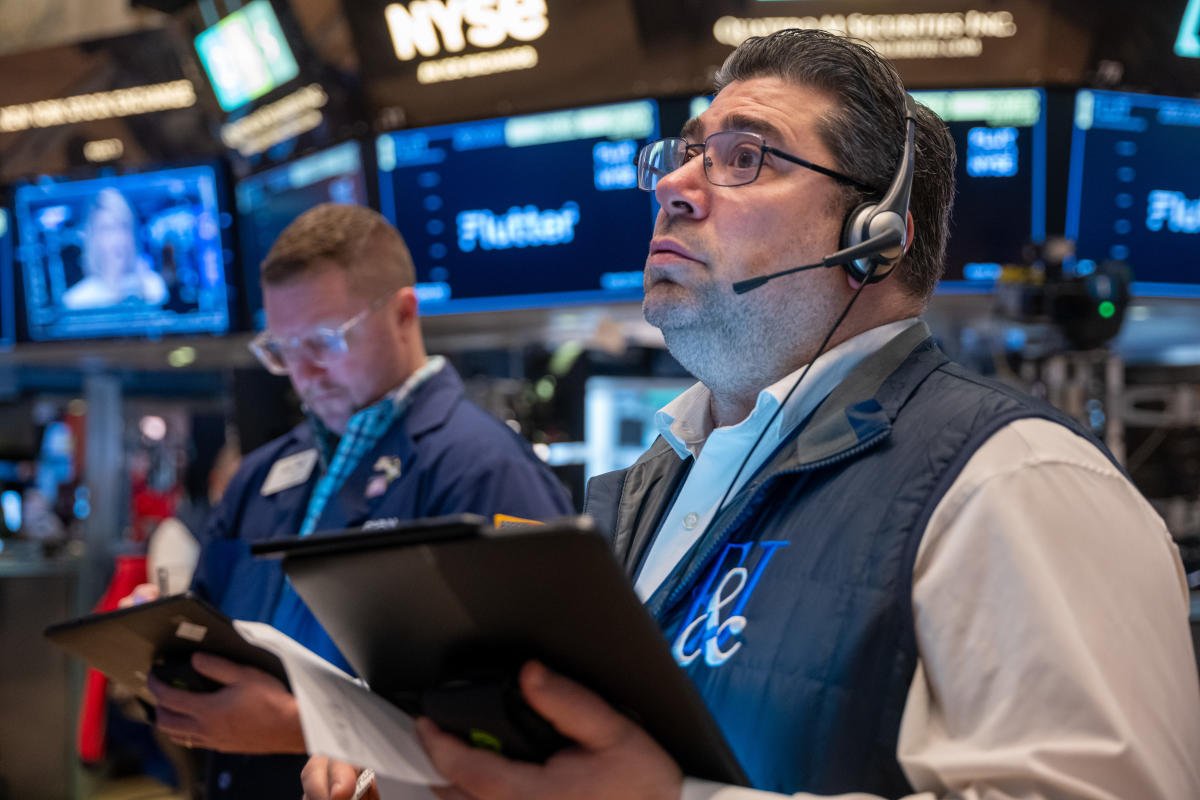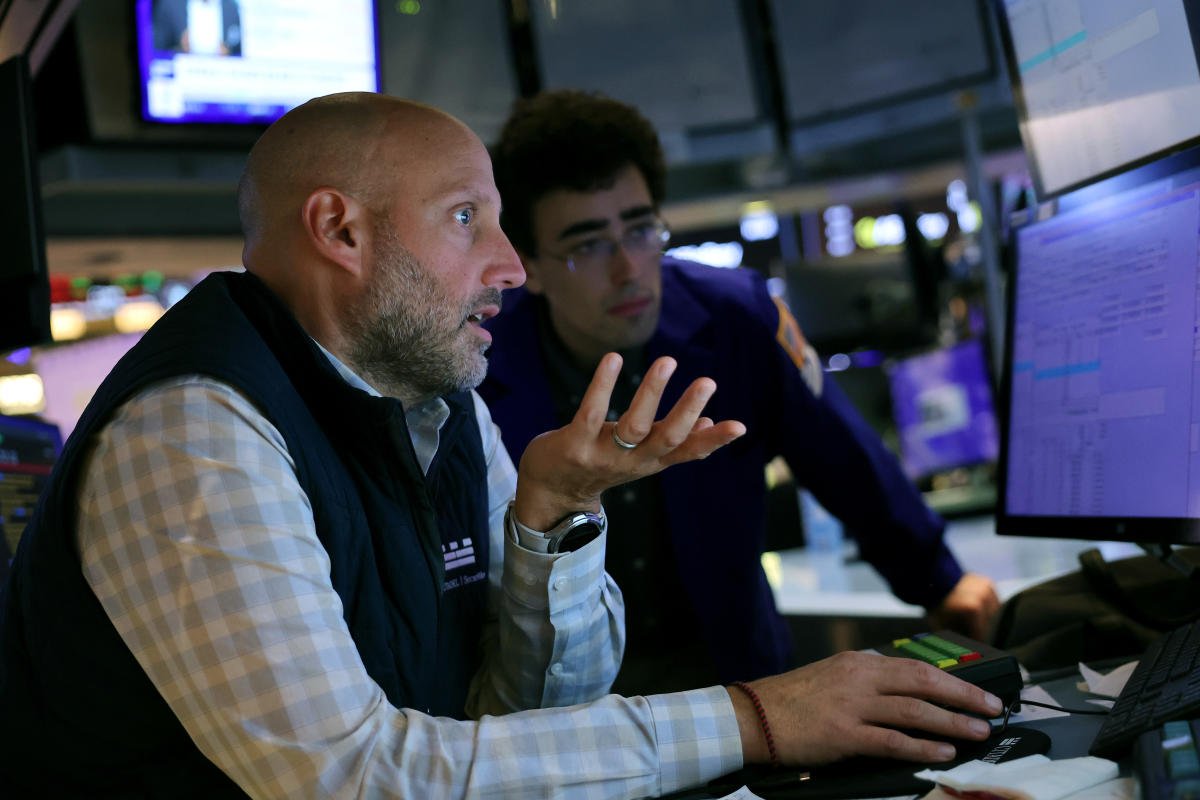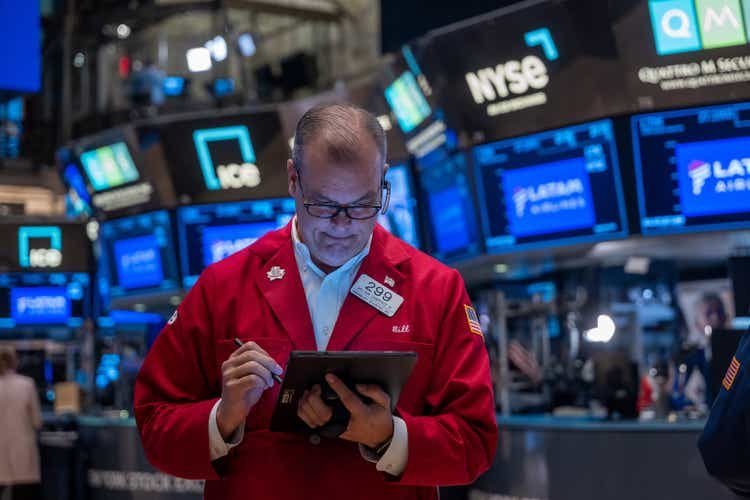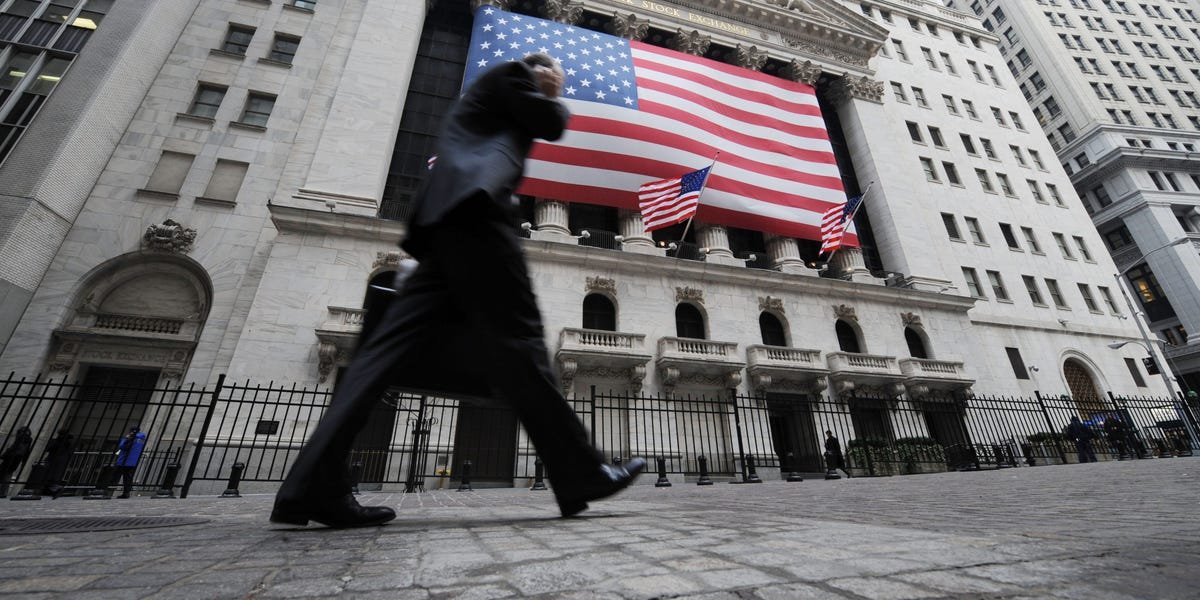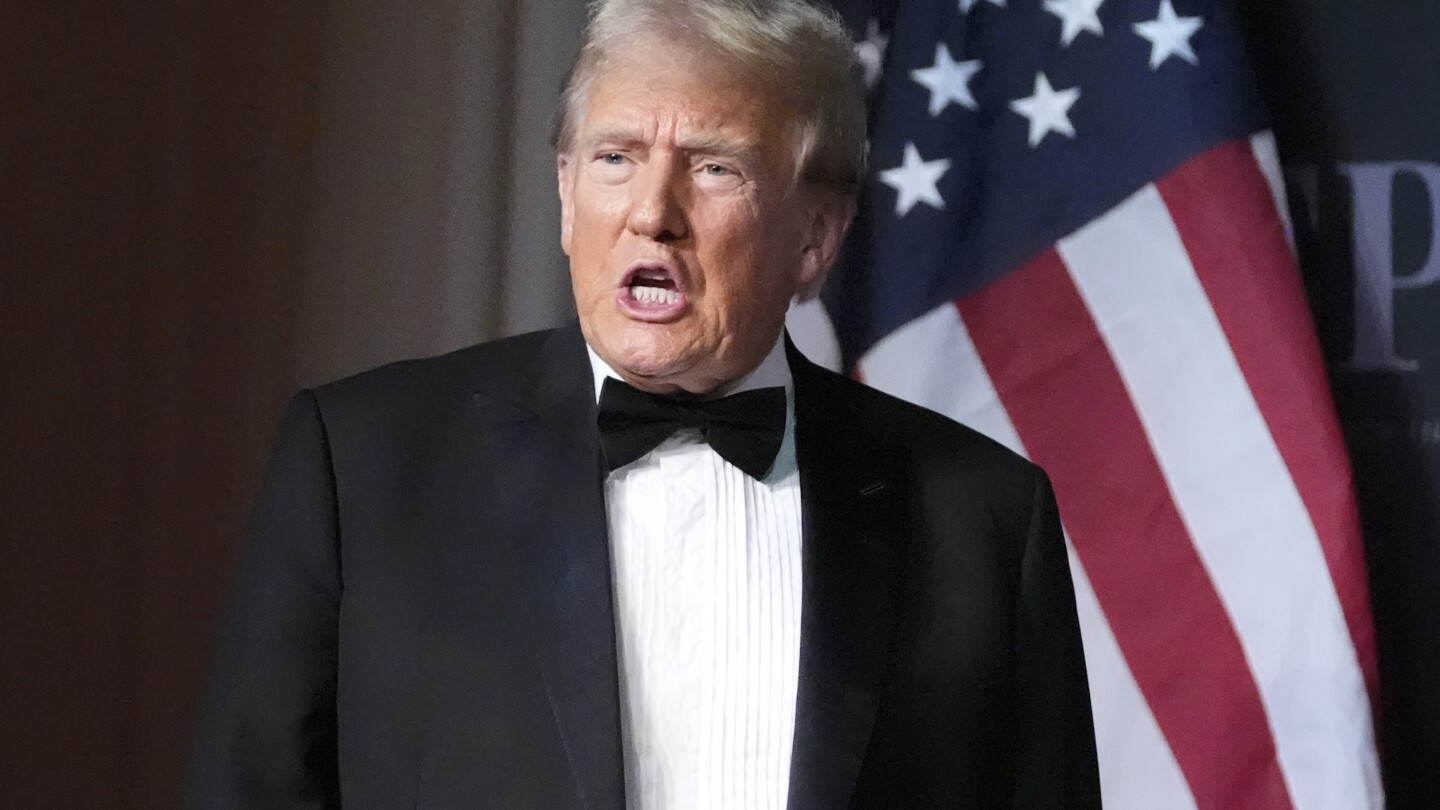Updated 2 min read
In This Article:
US stocks recovered from steep losses Wednesday ahead of Nvidia’s (NVDA) earnings, seen as a crucial litmus test for the artificial intelligence trade that could set the direction of markets for days to come.
The Dow Jones Industrial Average (^DJI) finished the day up about 0.3%, while the benchmark S&P 500 (^GSPC) closed flat. Meanwhile, the tech-heavy Nasdaq Composite (^IXIC) slipped about 0.1%. All three major indexes had been deep in the red at some point in the day, with the Nasdaq down over 1% in morning trading.
Investors counted down to Nvidia’s results after the bell, hoping the last of the “Magnificent Seven” tech megacaps to report can provide some fresh momentum for stocks. It’s seen as a reality check on just how important the AI poster child (and its cousins) are to the two-year bull market.
The $3.61 trillion chipmaker, now the world’s most valuable company, has seen its stock surge 200% this year so far, hitting record highs after the US presidential election.
Nvidia’s share price was down less than 1% after surging on Tuesday to buoy the Nasdaq to a win. Traders are bracing for a potential post-earnings swing of 8% — or $300 billion in market value — in either direction, going by options markets.
Elsewhere in corporates, Target (TGT) muted its outlook for holiday-season sales and profit after posting a big quarterly profit miss and slashing its full-year guidance. The retail giant’s shares sank more than 21% after the earnings.
Meanwhile, bitcoin (BTC-USD) prices were up more than 3% to hit a fresh record near $94,500 per token before paring back some gains and falling below $94,000. Optimism for a crypto-friendly Trump White House has spurred the digital currency’s recent rally.
LIVE 17 updates
-
Target has worst day in more than two years
Target (TGT) stock fell more than 21% on Wednesday, after the retail giant slashed its full-year guidance and missed Wall Street’s estimates for both earnings per share and revenue in its third quarter.
The Wednesday tumble marked the stocks worst one-day performance since May 2022.
-
Homebuilder stocks tumble as mortgage rates rise
Homebuilder stocks are losing steam.
The SPDR S&P Homebuilders ETF (XHB) has fallen nearly 5% in the past month. DR Horton (DHI), the biggest US homebuilder, along with Lennar (LEN) and PulteGroup (PHM) have seen declines of more than 12%, 6% and 11% in the past month, respectively.
“It’s not surprising and not really alarming that the group is giving some of its [gains] back,” Wedbush analyst Jay McCanless told Yahoo Finance. “When you look at what mortgage rates have done in the past month, basically since the beginning of the calendar 4Q, these stocks tend to trade in an inverse fashion of what mortgage rates are doing.”
Rates on the 30-year mortgages have been hovering around 6.7%, according to Freddie Mac, up from around 6% in September.
Meanwhile, lumber prices have been climbing, with the framing lumber composite price rising 1.4% for the week ending Nov. 15, reaching the highest level since August 2023, according to the National Association of Home Builders.
“It just may be a little more expensive from a lumber perspective for the builders than what they were paying this time last year,” McCanless said.
-
Numbers to watch in Nvidia’s earnings
Nvidia’s highly anticipated earnings report is set for release after the closing bell.
Yahoo Finance’s dan Howley breaks down the key numbers and themes to watch:
Nvidia is expected to report Q3 earnings per share (EPS) of $0.74 on revenue of $33.2 billion, according to analysts’ estimates compiled by Bloomberg. That works out to an 83% year-over-year increase on both the top and bottom lines compared to the same period last year when Nvidia saw EPS of $0.40 on revenue of $22.1 billion.
Nvidia’s Data Center segment, its largest business, is set to bring in $29 billion for the quarter. That’s a 100% rise on the $14.5 billion reported in Q3 last year.
Gaming revenue is expected to top out at $3 billion, up 7% from last year, when the segment brought in $2.8 billion.
Analysts are anticipating gross margins to hit 75%.
Investors will be on the lookout for not only whether Nvidia beats on the top and bottom lines for Q3 but also whether it raises its outlook for Q4. Analysts are expecting Nvidia to give guidance of $37 billion in revenue in the quarter.
-
Qualcomm stock drops as investors signal doubts in growth plan
Shares of the chipmaker Qualcomm (QCOM) dropped 6.6% following its investor day, which focused on how the company will diversify revenue just as its business with Apple (AAPL) falls into jeopardy.
Qualcomm discussed further diversifying revenue beyond its smartphone chips to chips for personal computers, autos, and a range of advanced systems from machinery in factories to surveillance technology (dubbed its “Internet of Things” segment). Yahoo Finance’s Julie Hyman reports that the company expects to generate $22 billion in sales of those semiconductors by 2029.
Currently about 10% of Qualcomm’s revenue comes from sales of its modem chips to Apple for the iPhone, but that business has come under pressure as Apple increasingly develops its own custom chips for the devices.
Qualcomm CEO Cristiano Amon spoke with Yahoo Finance about what’s ahead for the company Tuesday afternoon.
-
Goldman Sachs is eyeing the next phase of the AI trade in 2025
Nvidia (NVDA) is set to report earnings after the bell and give investors another look at the state of AI spending. The stock is already up nearly 200% this year, and more than 2,600% in the past five years as the company’s revenues have run wild amid a surge in demand for its AI chips.
In a media roundtable on Wednesday, Goldman Sachs chief US equity strategist David Kostin made the case that it may be time for investors to look elsewhere to benefit from the AI boom. Nvidia’s liftoff was “phase one” of the AI trade, Kostin said. The “AI infrastructure” trade, companies that will help power the AI boom and are spending on AI chips to operate new servers has already taken off too, in some cases beyond their projected earnings growth, per Kostin.
But the price of stocks in Goldman’s “AI enabled revenue” group haven’t seen the same reaction. This group Kostin said could benefit from not having to spend as much on expensive AI hardware but still reap the potential benefits from AI as a whole.
The group includes stocks like Uber (UBER), Adobe (ADBE), Mastercard (MA), Salesforce (CRM) and more.
“We at companies in the AI enabled revenue group of stocks where their performance of the shares have basically matched their earnings growth,” Kostin said. “And so our analysis is there’s a potential for multiple expansion in those stocks.”
-
Williams-Sonoma says it’s ‘prepared to reduce our exports to China’ if tariffs increase
Williams-Sonoma (WSM) shares soared roughly 30% after the company reported third quarter earnings that surpassed Wall Street’s expectations and boosted its outlook for the full year.
The high-end retailer — which owns Pottery Barn and West Elm in addition to its namesake, Williams-Sonoma — also said it’s prepared to deal with potential upcoming tariffs under president-elect Donald Trump.
CFO Jeffrey Howie said: “[W]e’ve significantly reduced our China-sourced goods from 50% to 25% over the last few years. So our exposure is significantly less than the last time in 2018 that we saw this activity.”
“The US is already a major manufacturing hub for Williams-Sonoma Inc,” he added. “Much of our upholstery is manufactured domestically in our facilities in North Carolina and Mississippi.”
Howie continued: “We’re prepared to reduce our exports to China further if tariffs increase. We’ve mapped out a category-by-category plan to reduce China sourcing if conditions warrant, and we’re currently evaluating and quantifying the impact from additional tariffs. We have a wide range of mitigation options.”
-
Owning a home has rarely been this much more expensive than renting
Owning a home is becoming increasingly more expensive than renting one.
Yahoo Finance’s Claire Boston reports:
Exact cost estimates vary, but recently the premium for homeownership has been at least 35% over renting, a level that’s near historical highs and is likely to persist.
“We’re well, well beyond what the typical historical difference is if you were to buy an entry-level home versus rent a starter home,” said Rick Palacios Jr., director of research at John Burns Research and Consulting. “I think that’s a big part of why you see the resale market in a recession.”
Palacios’s firm has found factors like rising homeowners insurance premiums explain much of the growing gap. Higher mortgage rates don’t help either. Leaving other factors constant, it would take mortgage rates to be at 3.5% for the buying versus renting math to return to historical averages.
-
Fed’s Bowman says inflation progress ‘appears to have stalled’
On Wednesday, Federal Reserve governor Michelle Bowman expressed concern that the Fed’s progress toward 2% inflation has “stalled” and the central bank should proceed “cautiously” when lowering interest rates.
Bowman was the lone official to dissent when the Fed slashed the rate by half a percentage point, saying then that the Fed should’ve cut interest rates by 25 basis points instead of 50. On Wednesday, she argued there are “greater risks to the price stability side of our mandate, especially while the labor market remains near full employment.”
“We have seen considerable progress in lowering inflation since early 2023, but progress seems to have stalled in recent months,” Bowman said in a speech at the Forum Club of the Palm Beaches.
To Bowman’s point, last week the “core” Consumer Price Index (CPI), which strips out the more volatile costs of food and gas, showed prices increased 3.3% annually for the third consecutive month during October.
Recent data has increased debate over whether or not the Fed will cut rates in December. As of Wednesday afternoon, markets are pricing in a roughly 56% chance the Fed cuts rates in December, down from a more than 82% chance seen last week, per the CME FedWatch Tool.
-
One reason the Trump administration could be good for crypto
Bitcoin (BTC-USD) has soared about 40% since Donald Trump won the presidential election to trade above $94,000 per coin for the first time on Wednesday. On Wednesday, Galaxy Digital CEO Mike Novogratz told Yahoo Finance why the market has been betting the new administration will be more pro cryptocurrency.
“All the guys around the table like our space,” Novogratz said. “They believe in the digital asset world. They believe in blockchains and bitcoin. And so the whole energy of this administration is going to be so different than the Elizabeth Warren, Gary Gensler era.”
Novogratz added that he expects an administration that’s more supportive of crypto will help US crypto business operate without the “fear of litigation.” And for company’s like Novogratz’s it could help cut down on costs too.
“Our audit at Galaxy cost three times what it would if we were a non-crypto company,” Novogratz said. “So we’re spending $9 million a year on an audit for a medium-sized company. That’s insane. So the tax on crypto has been brutal. That is going to come way down. People aren’t going to fear … they’re constantly getting a Wells notice.”
-
Just a little late on that Target call…
Brutal day for Target (TGT) after earnings.
Here are three problems I saw in the quarter.
I wasn’t the only one spotting these things, of course.
The Citi research team swooping in with a midday downgrade on Target (a late one at that).
“We are downgrading Target from buy to neutral. Though 3Q may have had some unique challenges, we believe very poor results at Target in 3Q (and an uninspiring outlook for 4Q) show Target is likely losing share to Walmart (WMT). With Walmart’s market share gains coming largely from higher income consumers (as they called out yesterday), Target seems to be the one most at risk of losing additional share. We believe Target is likely to need to be more promotional to drive traffic/sales, which we believe makes fiscal year 2025 much more uncertain, especially because in 3Q Target did not show an ability to adjust SG&A to offset the sales/gross margin weakness,” said Citi analyst Paul Lejuez.
Bottom line: It’s going to take Target several quarters to regain investor trust. It could begin to do that by delivering on its severely lowered holiday quarter guidance.
-
Walmart, Lowe’s among latest companies to warn Trump tariffs could raise product costs
Walmart (WMT) and Lowe’s (LOW) are the latest American retailers to warn that product costs could rise if President-elect Donald Trump makes good on his tariff promises — which include 10% to 20% tariffs across the board and a 60% tariff on goods from China.
Walmart CFO John David Rainey hinted in an interview with Yahoo Finance’s Brian Sozzi on Tuesday that Trump’s tariff promises would prompt the retailer to hike costs, pointing to the impact of higher tariffs enacted during the president-elect’s first term under his “America First” agenda.
“If we look back historically when tariffs were enacted seven years ago, it did result in higher prices for customers,” Rainey said.
Lowe’s echoed the sentiment.
“Roughly 40% of our cost of goods sold are sourced outside of the US, and that includes both direct imports and national brands through our vendor partners,” said CFO Brandon Sink in a call with investors on Tuesday. “And as we look at potential impact, certainly would add product costs, but timing and details remain uncertain at this point.”
-
Nvidia stock’s long streak of post-earnings success
Nvidia (NVDA) is set to report earnings on Wednesday after the bell. Expectations — as they have been for more than a year now — are monstrous. Nvidia is expected to report Q3 earnings per share of $0.74 on revenue of $33.2 billion, according to analysts’ estimates compiled by Bloomberg. Both metrics would mark a more than 80% increase compared to the same quarter a year ago.
Nvidia has been consistently surpassing analyst estimates every quarter since OpenAI launched ChatGPT in November 2022. The AI chip leader’s stock reaction has been more mixed in the day following earnings announcements as expectations have grown lofty, but it hasn’t fallen two quarters in a row on the day following its earnings release since the middle of 2021.
That could change during Thursday’s trading day if Nvidia has a repeat of last quarter when the company’s upbeat outlook wasn’t enough to impress investors and the stock fell more than 6%.
“The company hasn’t had a negative price reaction in back to back post earnings release days since [the first quarter of 2021], when GenAI wasn’t a phrase in investors’ dictionary,” Julian Emanuel, who leads the equity, derivatives, and quantitative strategy team at Evercore ISI, wrote in a note to clients on Sunday. “A positive reaction following the 11/20 release, following the negative move last quarter, could help cushion the S&P 500’s decline somewhat near term but is more likely to refocus investors on the long term story.”
-
Target falls more than 20% after cutting full-year profit outlook
Target (TGT) stock tanked in early trading on Wednesday, falling more than 20% after the retail giant slashed its full-year guidance and missed Wall Street’s estimates for both earnings per share and revenue in its third quarter.
Before the bell, Target said it now expects full-year earnings per share in a range of $8.30 to $8.90, below its prior range of $9.00 to $9.70. The new guidance also came in well below the $9.61 earnings per share that Wall Street had expected.
The retailer also took a cautious stance on prospects for the holiday shopping season. Read more on Target’s quarter from Yahoo Finance Executive editor Brian Sozzi here.
-
Stocks mixed at the open, Nvidia slides
US stocks wavered on Wednesday ahead of Nvidia’s (NVDA) earnings, seen as a crucial litmus test for the AI trade that could set the direction of markets for days to come.
The Dow Jones Industrial Average (^DJI) was up about 0.2%, while the benchmark S&P 500 (^GSPC) hugged the flat line. Meanwhile, the tech-heavy Nasdaq Composite (^IXIC) slipped about 0.2%, following a mixed day on Wall Street on Tuesday.
After surging on Tuesday amid increased optimism surrounding the stock ahead of earnings, Nvidia shares slid more than 1% in early trade.
-
Comcast to spin off TV networks including MSNBC, CNBC
Comcast (CMCSA) is looking to play offense in the ever-evolving media landscape. On Wednesday, the company said that it will spin off most of its cable networks into a new publicly traded company called SpinCo.
The stock jumped as much as 3.5% in premarket trading before paring those gains.
The new venture will house the majority of NBCUniversal’s cable television networks, including USA Network, CNBC, MSNBC, Oxygen, E!, SYFY, and Golf Channel. Those networks collectively generated about $7 billion in revenue over the past 12 months, Comcast said in its announcement.
Comcast’s Peacock streaming service and the NBC broadcast network will remain under the parent company.
“This transaction positions both SpinCo and NBCUniversal to play offense in a changing media landscape,” said Comcast president Mike Cavanagh.
-
Good morning. Here’s what’s happening today.
Economic data: MBA mortgage applications (Nov. 15)
Earnings: Nvidia (NVDA), Jack in the Box (JACK), Nio (NIO), Palo Alto Networks (PANW), Snowflake (SNOW), Target (TGT), TJX (TJX), Williams-Sonoma (WSM)
Here are some of the biggest stories you may have missed overnight and early this morning:
Why Nvidia earnings could be sink-or-swim for the bull market
Target posts big earnings miss, slashes FY guidance
Nvidia traders brace for potential $300 billion earnings move
Comcast to spin off cable TV channels like MSNBC, USA
ECB warns of a ‘bubble’ in AI stocks
‘We’re concerned’: Walmart, Lowe’s warn on Trump tariff boost to costs
-
5 problems with Target’s earnings
It wasn’t a great quarter for Target (TGT) — earnings miss, full-year profit warning, and lagging performance versus Walmart (WMT).
I also didn’t like the tone around the business execs used on a call with reporters.
Considering Target hyped a turnaround a few months ago, this quarter is a setback for investors who were warming up to the story again.
Here are five problems I saw in the results:

